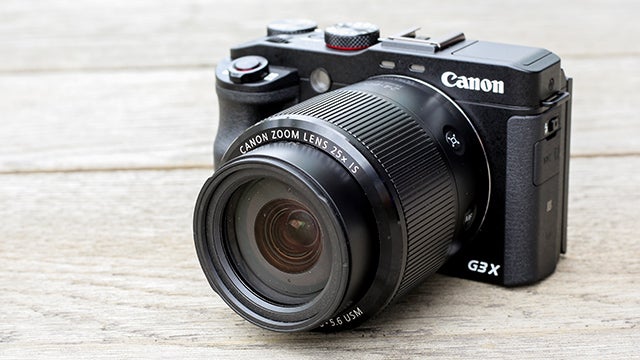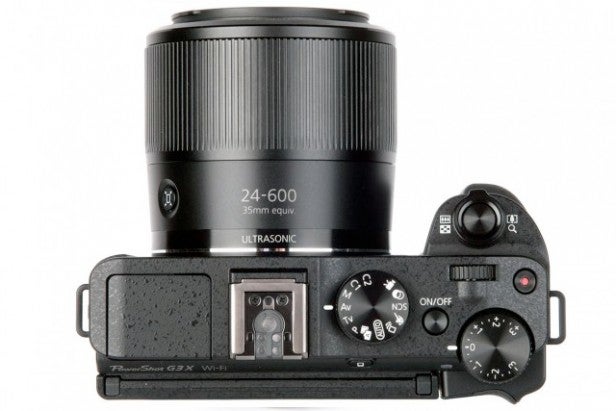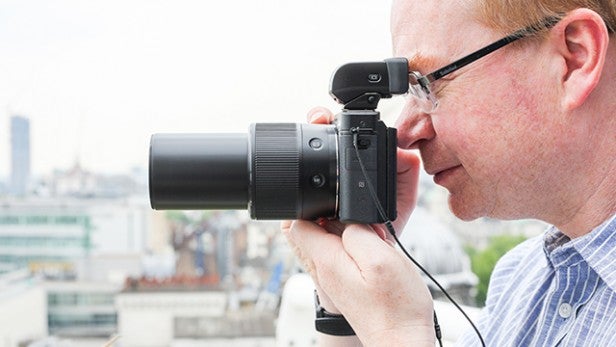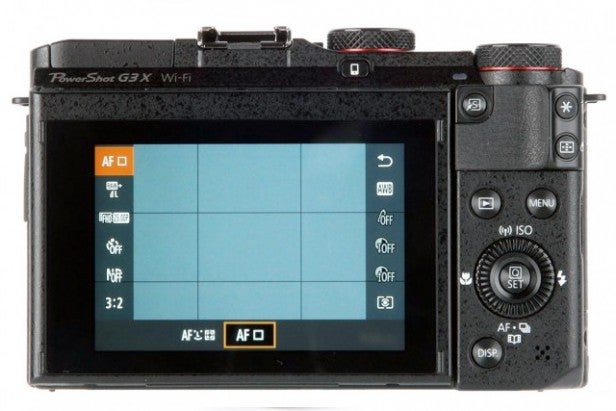Canon PowerShot G3 X Review - Lens and Features Review
Lens and Features
Not quite the most super of superzooms

Sections
- Page 1 Canon PowerShot G3 X Review
- Page 2 Lens and Features Review
- Page 3 Image Quality, AF, Video and Verdict Review
Canon PowerShot G3 X – Lens
The lens and sensor are what make the Canon PowerShot G3 X worth getting excited about. You get the versatility of a superzoom bridge camera, without the image-quality sacrifices often seen with the small 1/2.3-inch sensors so many of those camera use.
However, the Canon PowerShot G3 X has chosen to favour zoom range over the speed of the lens, indicated by its maximum aperture. You get a 24-600mm range, which will cover you for everything from landscape photography to wildlife shots. This zoom alone earns the camera plenty of credibility as a travelling or holiday companion.

Maximum aperture is far less impressive, though, ranging from f/2.8 to f/5.6. This is a big step down from the Sony RX10 II, which has a constant max aperture of F/2.8 throughout its 24-200mm range. Here, the max aperture winds down fairly rapidly. Fully wide, you can of course use f/2.8. But at 50mm, you only have max f/4 and at 85mm, it’s f/5; the max aperture from 200m to 600mm is f/5.6.
This means you’ll have to use higher ISOs at the same shutter speed compared to faster-lens rivals, testing the limits of the G3 X’s 1in sensor that bit earlier. This also has an effect on the clarity of the screen preview image when you’re shooting in lower light. It gets noisy pretty quick.

Before you opt for the Canon PowerShot G3 X because of its epic 600mm zoom, consider whether you’ll actually use it to its full extent – f/2.8 at 200mm might be more beneficial.
Note, too, that using the Canon PowerShot G3 X at 600mm handheld becomes a bit of a nightmare. There’s an effective OIS working its magic, but just keeping the camera still enough to hold the subject in the frame is difficult.
Minimum focusing distances give you plenty of flexibility when you’re not struggling with your own hand-shake, mind. Wide open, the subject can be as close at 5cm, extending to 85cm at the telephoto end. You can get pretty close.
Canon PowerShot G3 X – Features
A three-stop neutral-density filter in the Canon PowerShot G3 X is handy, since the lens barrel isn’t threaded to enable you to attach your own filters without an adapter. What are ND filters for? They restrict the amount of light getting through to the sensor, letting you shoot at wide apertures in bright daylight without hitting the maximum speed of the shutter.
The Canon PowerShot G3 X doesn’t have a particularly fast shutter. Where many other high-end compacts offer an electronic shutter capable of 1/16,000 of a second, here the shortest exposure time available is 1/2,000. Of course, you can argue that the ND filter largely removes the need for such speeds anyway, and avoids the image distortion that can come from using an electronic shutter at ultra-fast speeds. 
Other extras are a little more ordinary. There’s a pop-up flash, and the hotshoe will take a larger unit if you need something more powerful. The integrated unit can’t be used to wirelessly set off a secondary flash, though.
Wi-Fi and NFC are on-board too, making the usual wireless tasks of remote shutter control and image transfer that bit easier. You can also wirelessly transmit your shots to a Wi-Fi-enabled Canon printer.


